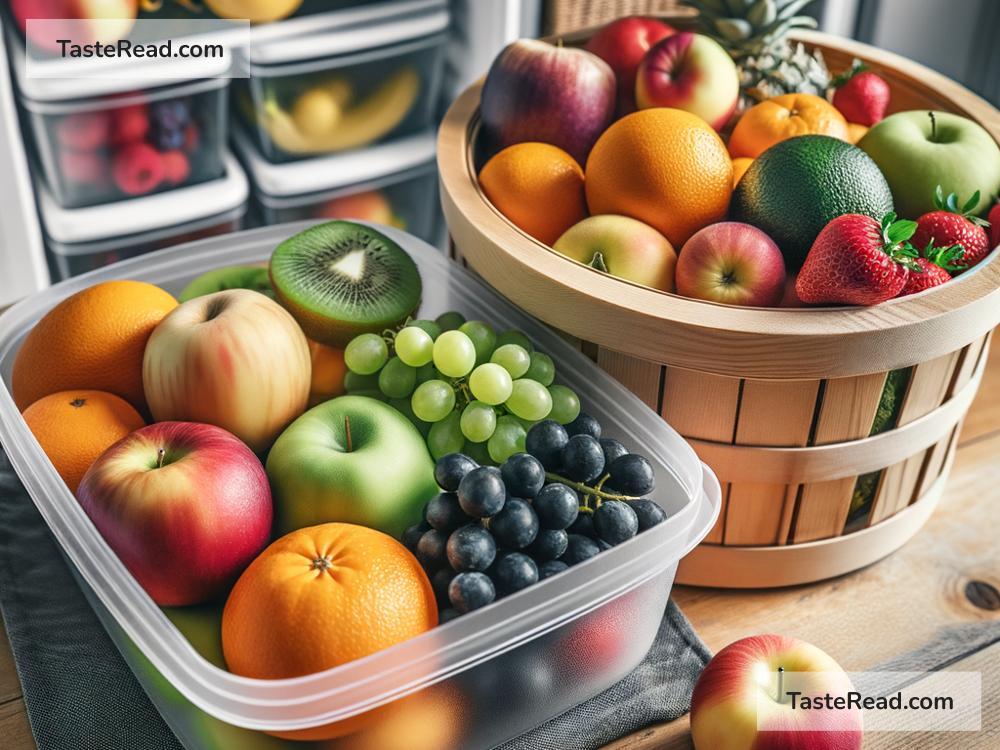How Storage Conditions Affect the Taste of Fruits
When you take a bite of a juicy strawberry or savor the sweetness of a ripe mango, you’re enjoying the final product of nature’s intricate process. However, if fruits are stored improperly, their taste can change—and not for the better! Understanding how storage conditions affect fruit flavors can help us keep them tasting fresh and delicious longer. In this blog, we’ll explore why storage matters and give you practical tips to preserve fruits at their best.
Why Do Storage Conditions Matter?
Fruits are living things, even after they are harvested. They constantly breathe, ripen, and change over time through a process called respiration. Respiration is when fruits use oxygen and release carbon dioxide. This process affects how fruits develop their flavor, texture, and aroma.
When fruits are stored in improper conditions—such as too much heat, too little humidity, or exposure to chemicals—they can ripen too quickly, lose moisture, or even spoil. These changes can negatively impact their taste, making them less enjoyable to eat. Proper storage is key to slowing down unwanted changes and preserving the natural flavor.
Let’s take a closer look at the main factors that affect how fruits taste during storage.
Factors That Affect Fruit Taste
1. Temperature
Temperature plays the biggest role in how fruits taste. Most fruits need cool temperatures to slow down their ripening process. If fruits are stored at too high a temperature, they ripen too fast, losing their sweetness or developing off flavors. For example:
- Apples and pears stay crisp and sweet when stored in a refrigerator at around 32°F (0°C). But if left in a warm kitchen, they may become mushy and sour quickly.
- Citrus fruits like oranges and lemons don’t need very cold temperatures. Room temperature or slightly cool conditions are perfect to preserve their tangy taste.
On the other hand, storing some fruits in overly cold temperatures can harm their flavor. Certain tropical fruits, like bananas and avocados, can experience “chilling injury” if refrigerated. This means they lose their flavor, turn brown, or become watery because they aren’t used to cold environments.
2. Humidity
Humidity, or the amount of moisture in the air, can heavily impact the taste and texture of fruits. Too little humidity can dry fruits out, making them shrivel and lose their natural juices. Too much humidity, however, can encourage mold and decay.
- Berries like strawberries, blueberries, and raspberries need proper humidity levels to stay plump and flavorful. A dry fridge without proper moisture can cause berries to shrivel prematurely.
- On the flip side, excess moisture can make tender fruits like peaches and grapes mushy and moldy. To strike the right balance, consider moisture-control settings in your fridge or store fruits loosely covered.
3. Airflow
Airflow ensures that oxygen reaches the fruit and carbon dioxide is removed, helping the fruit breathe during storage. However, stale or improper airflow can suffocate fruits and even make them develop unpleasant flavors.
For example, keeping fruits tightly wrapped or sealed in airtight containers can trap gases and accelerate spoilage. Apples and bananas give off ethylene gas during ripening, which can make neighboring fruits ripen faster and lose their flavor. Proper ventilation is important, allowing fruits to ripen at their natural pace.
4. Light Exposure
Light exposure can lead to uneven ripening and affect a fruit’s flavor over time. Generally, fruits should be kept in a dark or shaded space to avoid direct sunlight. Sunlight can cause over-ripening, drying, or even a bitter taste. For instance, tomatoes (technically a fruit!) left on a windowsill may shrivel and lose their sweetness due to excessive sunlight.
How to Store Fruits for the Best Taste
Here are some practical tips to improve how you store fruits:
-
Separate Fruits by Type: Some fruits, like apples, bananas, and kiwis, produce ethylene gas as they ripen. Store these away from sensitive fruits like strawberries and lettuce to prevent spoilage.
-
Use the Crisper Drawer: Many refrigerators have a crisper drawer designed to control humidity. Use it for fruits like berries, oranges, and grapes to maintain their juiciness.
-
Room Temperature Storage: Fruits like bananas, avocados, and melons ripen best at room temperature. Once ripe, you can move them to the fridge to slow further ripening.
-
Avoid Washing Before Storage: Washing fruits before refrigerating can introduce excess moisture, which encourages mold. Wait until you’re ready to eat or use them to wash.
-
Inspect Regularly: Check stored fruits often for signs of spoilage. One bad apple really can ruin the bunch, as decaying fruits release gases that can spoil others faster.
Final Bite
The taste of fruits depends on how you store them. Factors like temperature, humidity, airflow, and light exposure determine whether your favorite fruits stay sweet, juicy, and crisp—or become dry, mushy, and tasteless. With a little care, you can preserve their fresh, delicious flavors and avoid waste.
Fruits are nature’s gifts, packed with vitamins and flavor. By storing them wisely, you can make the most of them—whether you’re enjoying a snack, blending a smoothie, or creating a fruit salad. Who doesn’t love biting into a piece of fruit that tastes as good as it looks? Happy eating!


